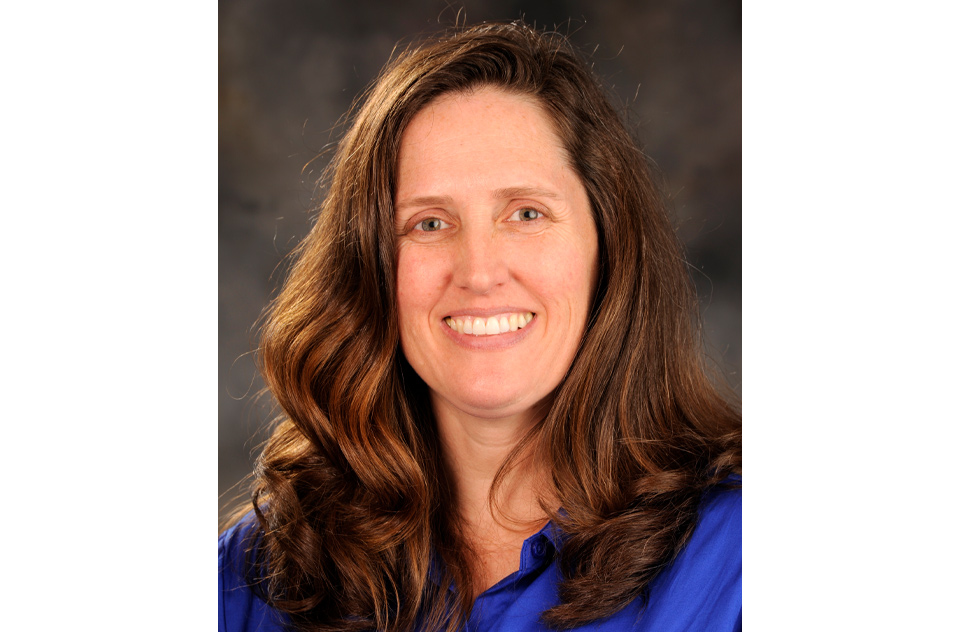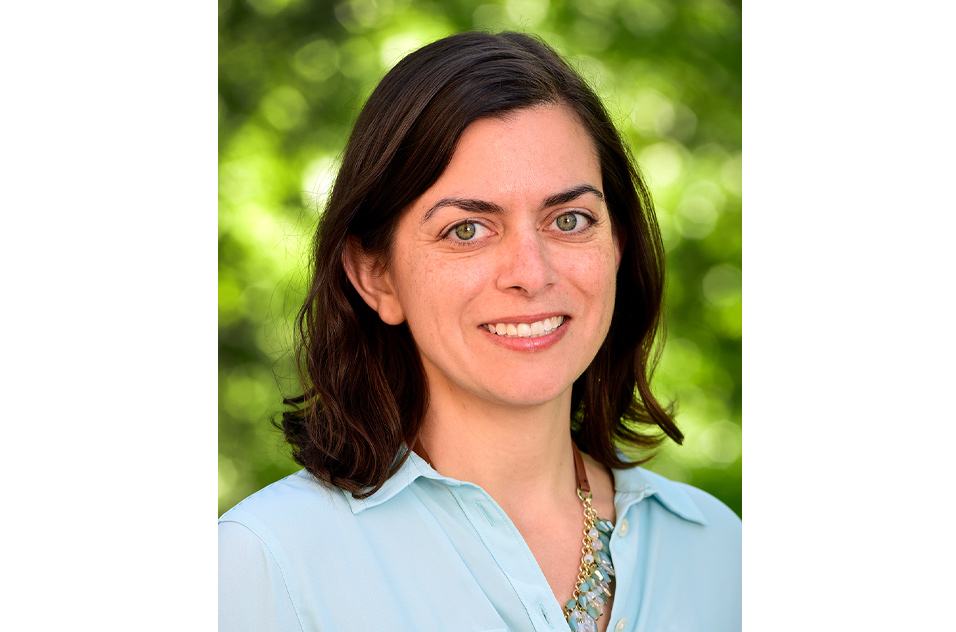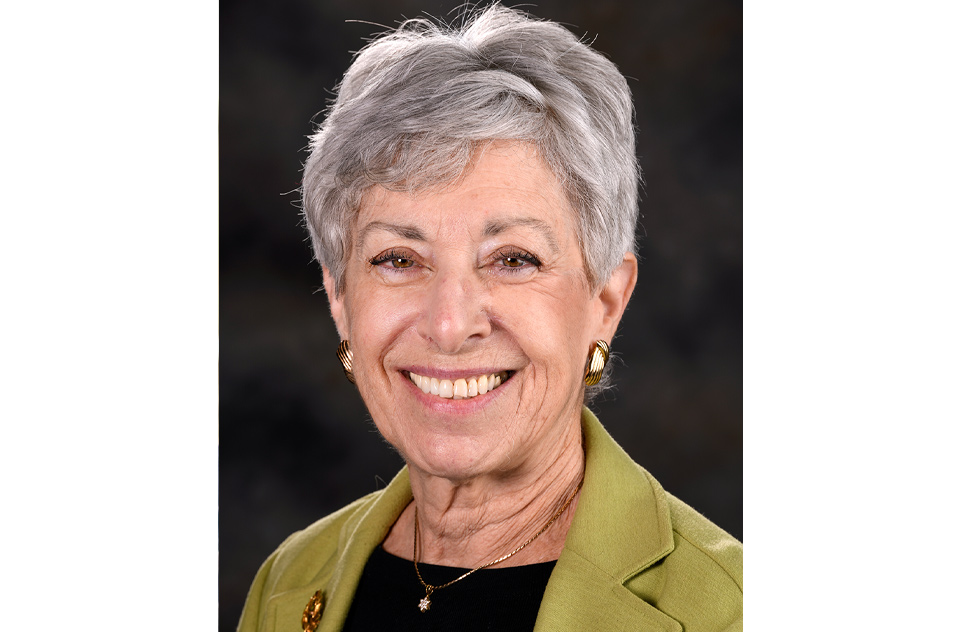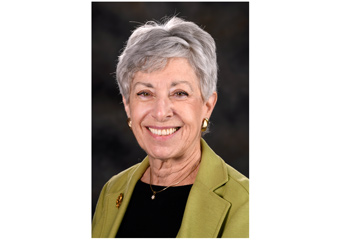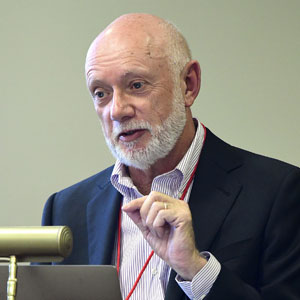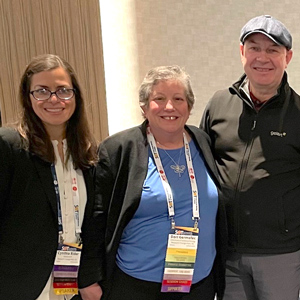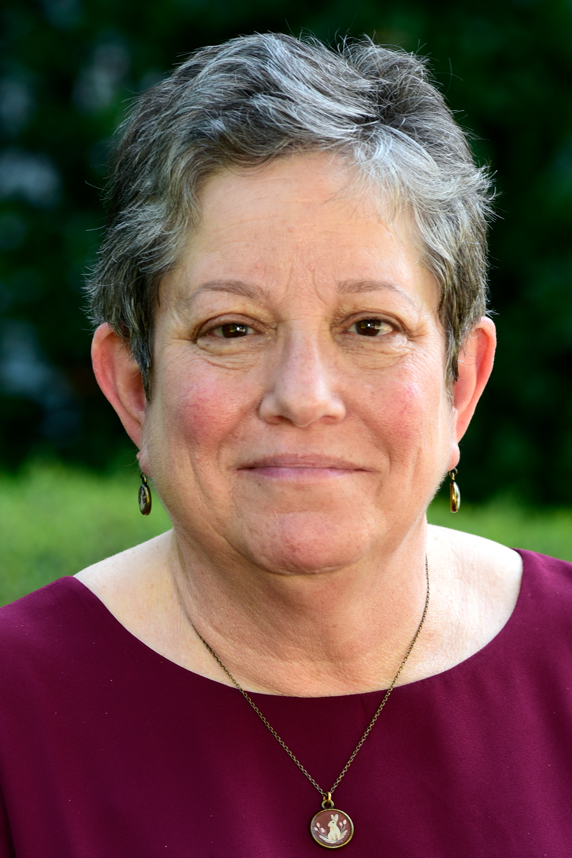 “It’s a real privilege,” Germolec said about embarking on the next two years as a leader of SOT, the largest international collective of toxicologists. She will serve as vice president of the organization this year and then as president in 2023. (Photo courtesy of Steve McCaw / NIEHS)
“It’s a real privilege,” Germolec said about embarking on the next two years as a leader of SOT, the largest international collective of toxicologists. She will serve as vice president of the organization this year and then as president in 2023. (Photo courtesy of Steve McCaw / NIEHS)At the 61st annual meeting of the Society of Toxicology (SOT), held March 27-31, NIEHS scientists explored topics such as nonanimal toxicity testing, cardiovascular disease, per- and polyfluoroalkyl substances (PFAS), artificial intelligence (AI), and more. Institute researchers participated in nearly 90 presentations, and several scientists were honored with awards. The conference took place in San Diego but was livestreamed and recorded for virtual attendees.
“SOT’s annual meeting is an opportunity for us to highlight the great work of NIEHS and the National Toxicology Program (NTP),” said Dori Germolec, Ph.D., from the NIEHS Division of National Toxicology Program (DNTP) Systems Toxicology Branch. Germolec, who will become vice president of SOT in May, co-chaired the scientific program committee for this year’s meeting.
New approach methodologies
Participants discussed new approach methodologies (NAMs) designed to reduce, refine, and, in some cases, replace the use of animals in studies.
“There has been a noticeable evolution towards new approaches over the last 10 years at SOT,” said Nicole Kleinstreuer, Ph.D., acting director of the National Toxicology Program Interagency Center for the Evaluation of Alternative Toxicological Methods (NICEATM).
Computational technology, AI, and machine learning are some of the tools that are advancing the field of toxicology and opening doors for greater incorporation of nonanimal research, according to Kleinstreuer.
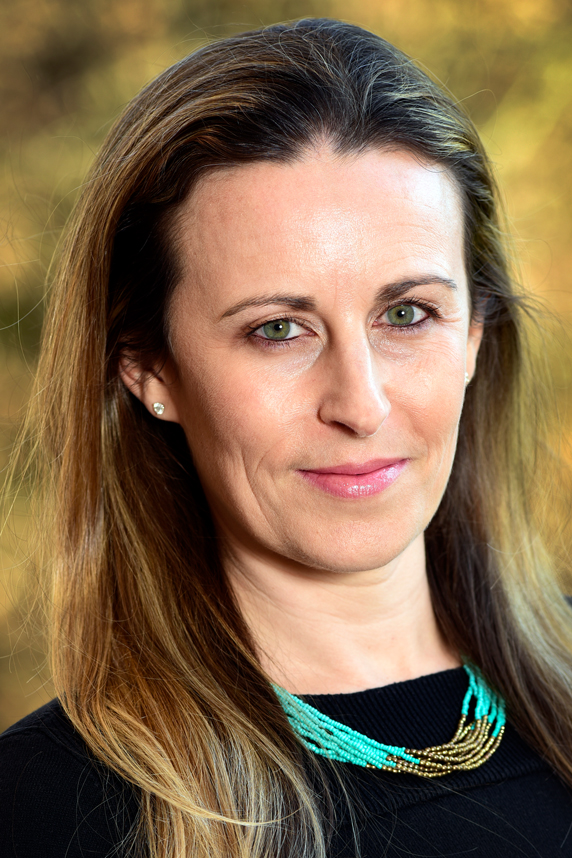 Kleinstreuer has led NICEATM to new heights, as demonstrated by the large quantity of research she and her colleagues shared at SOT this year. (Photo courtesy of Steve McCaw / NIEHS)
Kleinstreuer has led NICEATM to new heights, as demonstrated by the large quantity of research she and her colleagues shared at SOT this year. (Photo courtesy of Steve McCaw / NIEHS)“SOT has been a great venue to demonstrate all the NICEATM and Tox21 [a multiagency substance testing collaboration] work that has been done, especially the alternatives to animal testing research,” noted Warren Casey, Ph.D., acting chief of the DNTP Predictive Toxicology Branch.
One example of that work is a NICEATM resource called the Integrated Chemical Environment (ICE) dashboard.
Kleinstreuer explained that with ICE, scientists can enhance their computational capabilities through machine learning, AI, and big data analysis. Such technology allows researchers to build systems-based models that better predict potential health effects of environmental agents.
“Scientists, risk assessors, and regulatory decisionmakers who are interested in sustainable, safer design of products can use ICE to create computational model predictions to inform chemical risk assessments,” said Kleinstreuer.
Cardiovascular toxicology
New research is adding the heart to the list of organs being examined in toxicological studies through in vitro, or cell-based, models.
Alex Merrick, Ph.D., acting chief of the DNTP Mechanistic Toxicology Branch (MTB), said his team presented their recent work in developing cellular screening models, linked with biocomputational methods, to predict toxicity.
 “Alternative methods help improve our prediction models,” said Merrick. “Our collective efforts in the branch represent a shift from traditional animal toxicology testing towards NAMs, which is a good representation of our strategic intent for the branch.” (Photo courtesy of Steve McCaw / NIEHS)
“Alternative methods help improve our prediction models,” said Merrick. “Our collective efforts in the branch represent a shift from traditional animal toxicology testing towards NAMs, which is a good representation of our strategic intent for the branch.” (Photo courtesy of Steve McCaw / NIEHS)Namely, they are exploring cardiomyocytes, which are the cells that generate force within the heart to make it beat or contract. Merrick’s team uses advanced instrumentation to explore cardiomyocytes as a model to screen toxicants that could cause irregular heart rhythms or contribute to cardiovascular disease.
“Cardiovascular disease is something that we really haven’t had as an area of concentration,” Merrick said. “To be able to have the instruments to put us in this arena is really exciting for us.”
PFAS a hot topic
Merrick’s team also presented studies investigating PFAS. David Crizer, Ph.D., and Wei Qu, Ph.D., from MTB, shared work that predicts potential bioaccumulation and liver toxicity from long-term exposure to the substances.
Sue Fenton, Ph.D., also from MTB, co-chaired a panel on hypertensive disorders of pregnancy that included a presentation on PFAS and preeclampsia by Paige Bommarito, Ph.D., from the NIEHS Perinatal and Early Life Epidemiology Group. Fenton also shared posters on breastmilk PFAS levels in the U.S. and Canada, and in utero exposure to perfluorooctanoic acid, a type of PFAS.
Also on that panel was Brandy Beverly, Ph.D., from the DNTP Health Assessment and Translation Group, who presented “Identification of Emerging Biomarkers of Hypertensive Disorders of Pregnancy in Women for Use in Environmental Health Animal Studies Using Interactive Evidence Mapping.”
Another topic that drew attendees’ attention was PFAS in firefighting foams. Suramya Waidyanatha, Ph.D., from the DNTP Office of Program Operations, discussed PFAS-containing aqueous film-forming foams (AFFFs) and potential effects on firefighters. MTB scientist Stephen Ferguson, Ph.D., also shared his work on PFAS exposure and AFFFs.
Woychik shares innovative research
At a “Meet the Director” session on March 29, Rick Woychik, Ph.D., head of NIEHS and NTP, spoke about NIEHS funding opportunities, provided an overview of NTP, and shared the many diversity, equity, and inclusion efforts NIEHS is involved in, including the UNITE initiative.
Woychik focused on innovation in toxicological research, noting progress by DNTP scientists to advance more human-relevant methods that incorporate cell-based models and sophisticated computational and analytical approaches. Among other benefits, such tools will enable researchers to more efficiently screen emerging environmental substances and better predict toxicity in target tissues, such as the heart and kidney.
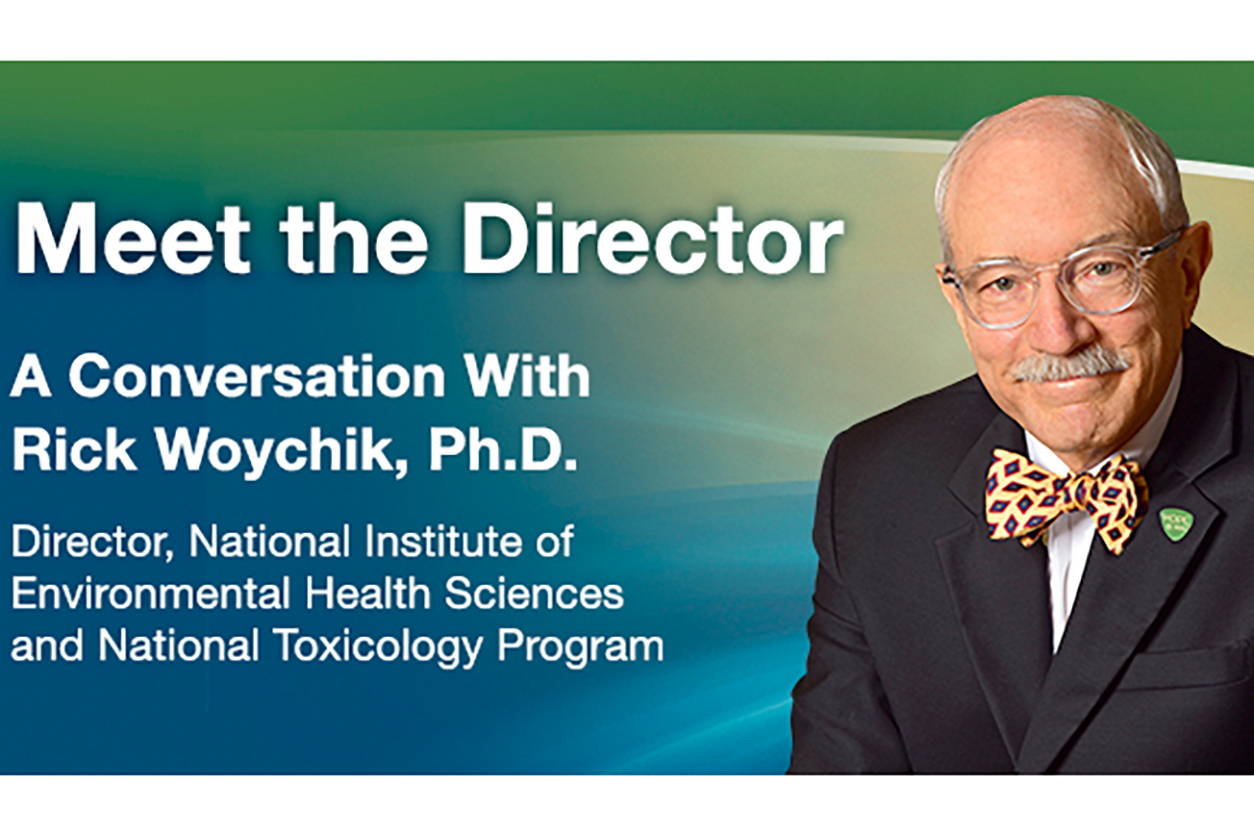 Woychik highlighted several ongoing NIEHS initiatives, including the Environmental Health Language Collaborative, about which Stephanie Holmgren, program manager in the Office of Data Science, chaired a session on the following day. (Image courtesy of NIEHS)
Woychik highlighted several ongoing NIEHS initiatives, including the Environmental Health Language Collaborative, about which Stephanie Holmgren, program manager in the Office of Data Science, chaired a session on the following day. (Image courtesy of NIEHS)Germolec, who moderated the Meet the Director session, said NIEHS directors have been highlighted prominently at the annual SOT meetings over the years. And this year was no different.
Among the highlights was Linda Birnbaum, Ph.D., former NIEHS and NTP director, who received the 2022 SOT Merit Award.
“This is a huge honor, and I am thrilled,” she said. “SOT has been a really important part of my life.”
Birnbaum joined SOT in 1981, later serving in several roles for the organization, including president. She was a founding member of its Women in Toxicology Group.
Molding standout scientists
Two NIEHS Intramural Research Training Award postbaccalaureate fellows are just getting started at SOT. Alex Merder and Kathleen Embury, from the institute’s Environmental Epigenomics and Disease Group, each led a first author study accepted for poster presentation. Both are supervised by group members Suzanne Martos, Ph.D., and Michelle Campbell, who received last year’s SOT Best Postdoctoral Publication Award.
Merder’s research further analyzed the effects of tobacco smoke on the human immune system. Embury’s complex epigenetics study explored how exposure to a mixture of polycyclic aromatic hydrocarbons found in tobacco smoke effects mouse bone marrow cells and human blood cells.
Douglas Bell, Ph.D., who leads their group, said he is thrilled to watch them grow so successful at such an early stage in their scientific careers.
“They really are outstanding, and the level of complexity of their projects is quite impressive,” he said.
(Jennifer Harker, Ph.D., is a technical writer-editor in the NIEHS Office of Communications and Public Liaison.)






